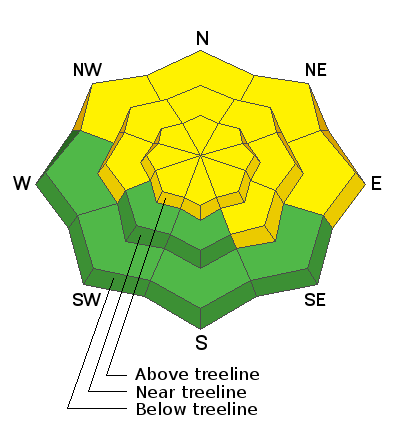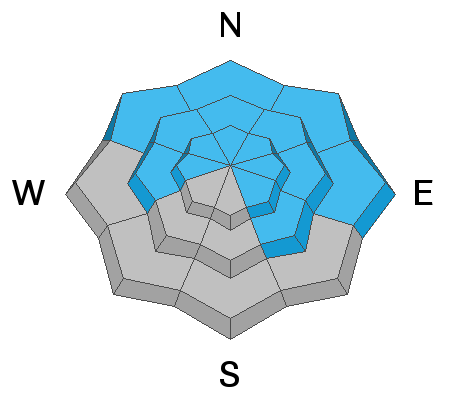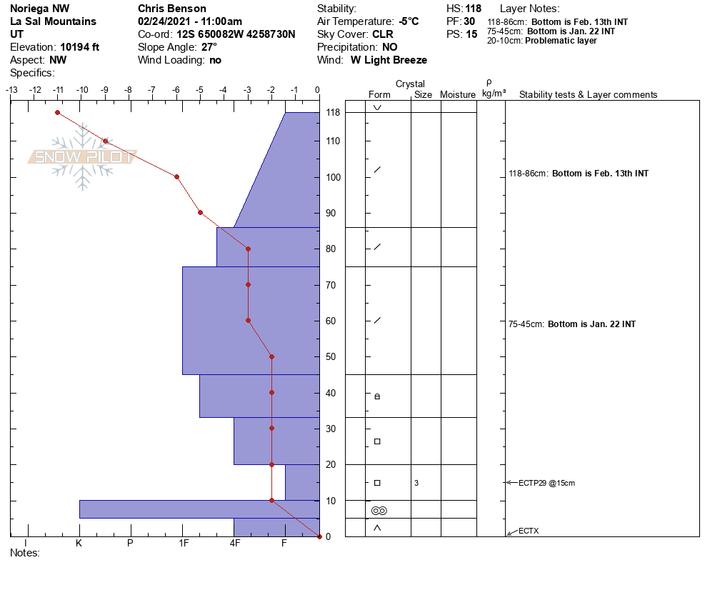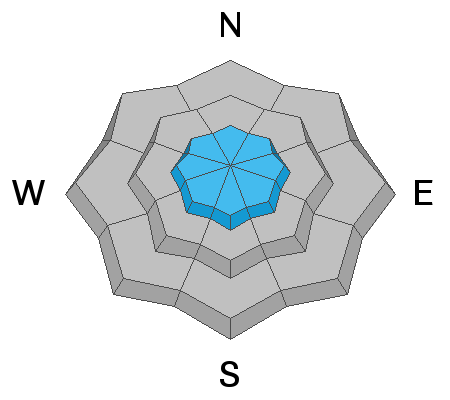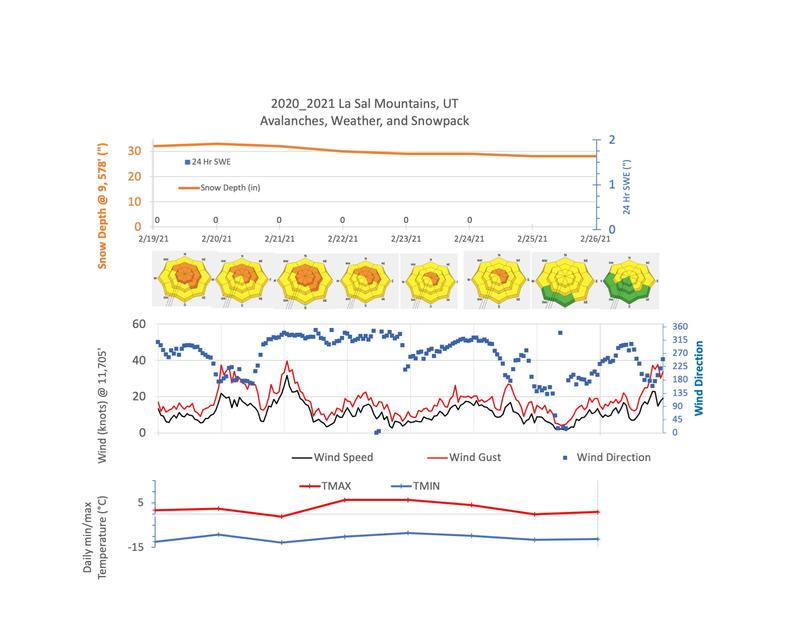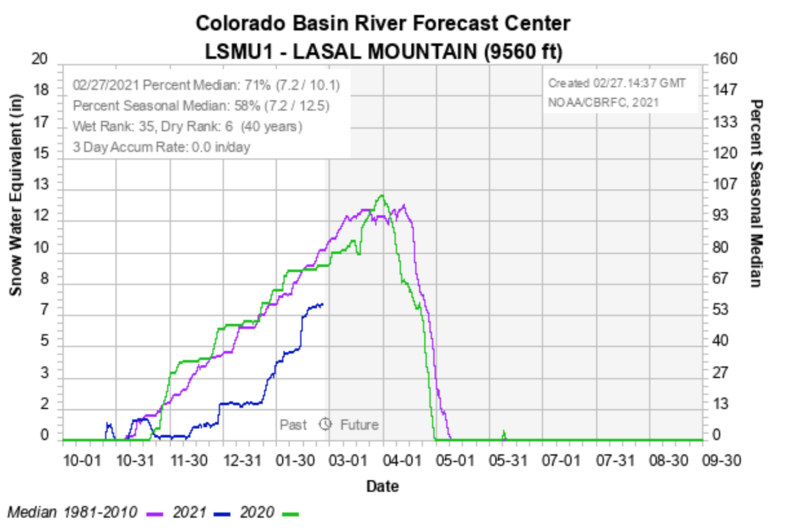The Geyser Pass Road is plowed but the surface is snow-packed, icy, and slick. All-wheel drive with good tires is recommended.
The Lower Utah Nordic Alliance (LUNA) groomed and set classic track into Gold Basin Friday but a few inches of snow has fallen since.
Avalanche Forecasters Toby Weed and Paige Pagnucco investigated a recent avalanche fatality in Idaho just north of the Utah border.
24 Hour Snow 0" 72 Hour Snow 3" Base Depth in Gold Basin 50" Wind NE 15-20 G33 Temp 4F
Under clear skies, mountain temps are in the single digits to below zero and a cold NE wind is blowing. High temps today will creep up into the teens with continued breezy NE winds averaging 10-15 mph with gusts into the 20's along ridge tops. Conditions look to remain dry and clear through mid-week with models coming into a closer agreement over a low-pressure system moving through the 4 Corners on Thursday that may bring us a chance for a few inches of snow. A significant change is still being advertised for around the 11th.
Snowpack Discussion
A few inches of new snow yesterday provided a bit of a refresh to the snow surface and winds have formed fresh, shallow drifts at upper elevations. Warmer temperatures and time have helped consolidate the snowpack, but weak layers of sugary, faceted snow still exist on most aspects. Outward signs of instability are far and few between but localized collapsing can still be felt in areas where the snowpack is thin and weak. On slopes facing NW-N-SE a slab 1'-3' thick exists on top of buried, weak, facets. These slabs are becoming harder to trigger but once released they would produce deep and dangerous avalanches. Likely trigger points include shallower areas along slope margins, around sparse trees or rock outcroppings, or on repeat running slide paths. It's a gamble out there right now, and it's not a chance any of the forecasters or observers I know are willing to take.
Chris Benson sums up conditions in the video below:

